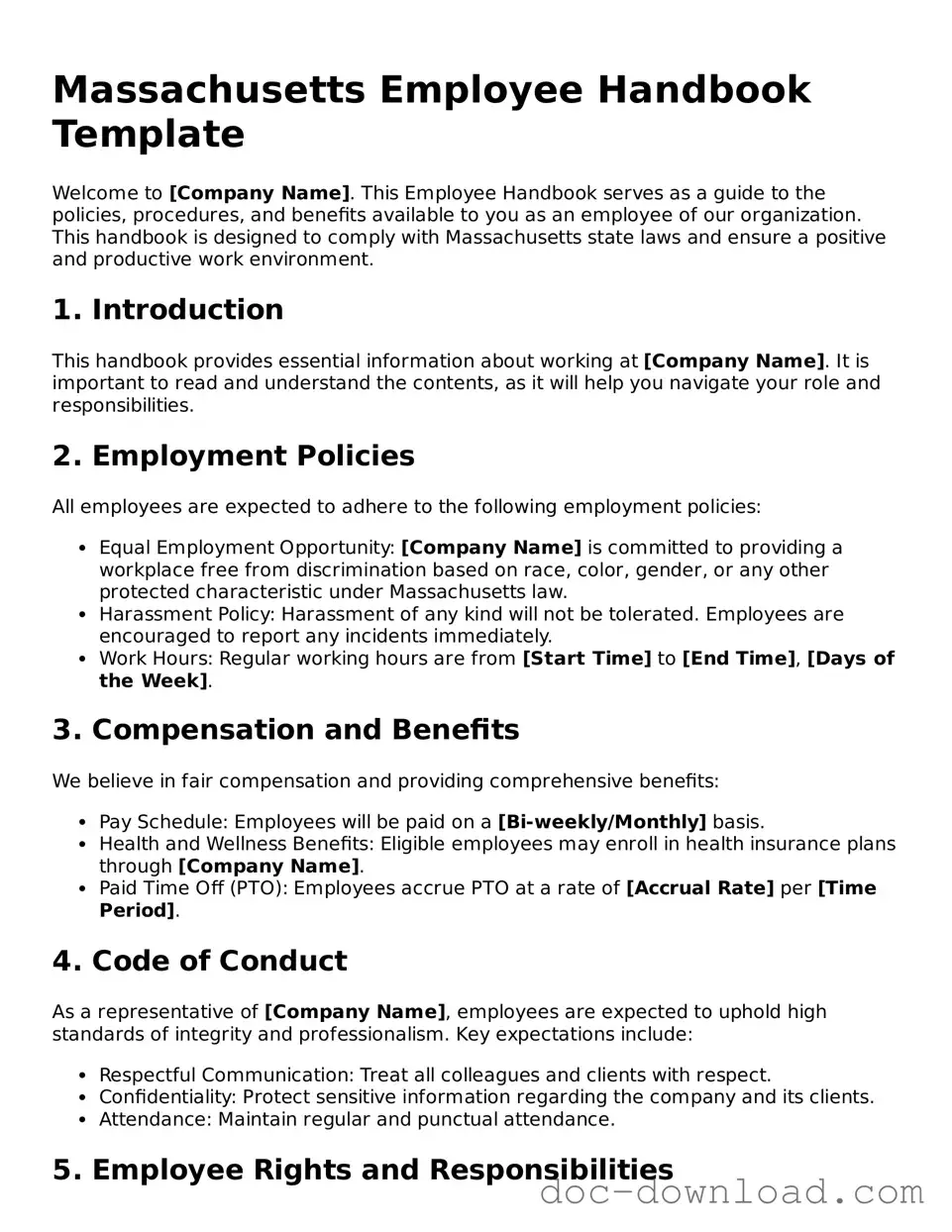The Massachusetts Employee Handbook serves as a vital resource for both employers and employees, outlining workplace policies and expectations. One document that shares similarities is the Employee Manual. Like the handbook, the Employee Manual provides detailed information about company policies, procedures, and employee rights. It typically includes sections on workplace conduct, attendance, and benefits, ensuring that all employees understand their responsibilities and the resources available to them.
Another comparable document is the Company Policy Guide. This guide focuses specifically on the policies governing workplace behavior and procedures. It often covers topics such as harassment, discrimination, and disciplinary actions, similar to the Employee Handbook. Both documents aim to create a safe and respectful work environment, emphasizing the importance of adhering to company standards.
The Orientation Packet is also akin to the Employee Handbook. Typically provided to new hires, this packet introduces employees to the company culture, mission, and values. While the Employee Handbook offers more comprehensive policies, the Orientation Packet serves as a helpful introduction, ensuring that new employees feel welcomed and informed from day one.
In understanding legal documents related to property transfer, it is essential to recognize the significance of various forms that ensure a smooth transition of assets. The Texas Transfer-on-Death Deed, for example, serves as a vital tool for property owners who wish to designate beneficiaries for their properties posthumously. This deed simplifies the transfer process while minimizing complications, thus safeguarding the interests of heirs. To dive deeper into the specifics of this form, you can visit todform.com/blank-texas-transfer-on-death-deed.
The Workplace Safety Manual is another document that parallels the Employee Handbook. This manual focuses specifically on safety protocols and procedures within the workplace. Both documents aim to protect employees, but the Workplace Safety Manual delves deeper into specific safety measures, emergency procedures, and reporting accidents, ensuring that employees are well-informed about their safety responsibilities.
Similar to the Employee Handbook is the Benefits Summary. This document outlines the various benefits offered to employees, such as health insurance, retirement plans, and paid time off. While the Employee Handbook may touch on these topics, the Benefits Summary provides a more focused overview, making it easier for employees to understand their entitlements and how to access them.
The Code of Conduct is another document that shares similarities with the Employee Handbook. This code outlines the expected behavior of employees within the workplace. It typically includes guidelines on professionalism, ethical behavior, and conflict resolution. Both documents aim to foster a positive work environment by clearly defining acceptable and unacceptable behaviors.
The Non-Disclosure Agreement (NDA) is also related to the Employee Handbook. While the handbook provides general policies, the NDA specifically addresses the confidentiality of sensitive company information. Both documents emphasize the importance of trust and integrity within the workplace, ensuring that employees understand their obligations regarding proprietary information.
The Performance Evaluation Form is similar in that it relates to employee development and expectations. While the Employee Handbook outlines the overall performance standards, the Performance Evaluation Form provides a structured way to assess and document employee performance. This ensures that employees receive feedback on their work and understand areas for improvement, aligning with the goals set forth in the handbook.
Lastly, the Grievance Procedure Document is akin to the Employee Handbook. This document details the steps employees can take to report issues or concerns within the workplace. Both documents aim to provide employees with a clear understanding of their rights and the processes available to address grievances, fostering an environment of open communication and support.
